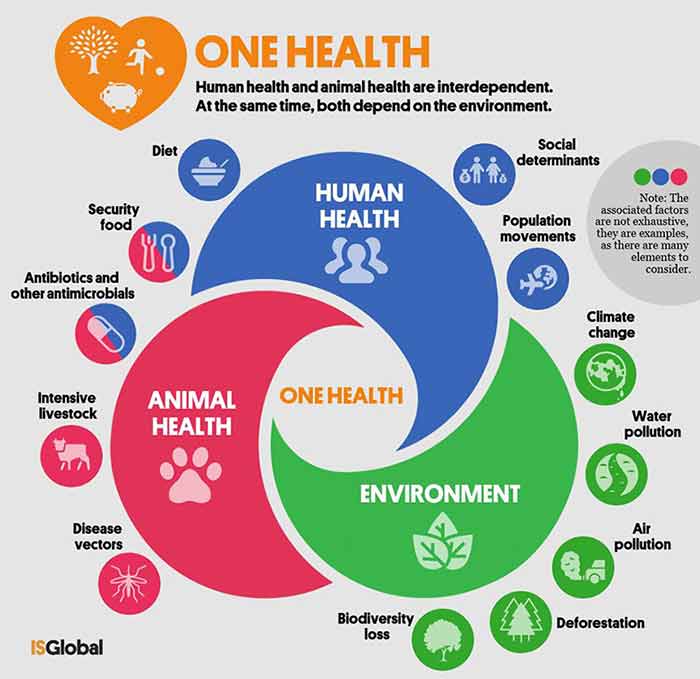In the video above, John Campbell, Ph.D., a retired nurse educator, reviews the proposed amendments to the 2005 International Health Regulations (IHR), which is the instrument that empowers the World Health Organization to declare a Public Health Emergency of International Concern (PHEIC).
If these amendments go through, however, the WHO will be empowered to do a whole lot more than that. It will become the de facto governing body of all member states, including the U.S.
Now, according to so-called “fact checkers,” the WHO will have no authority to dictate U.S. health policy under the amended IHR or the proposed pandemic treaty, nor will nations be stripped of their sovereignty.1 But they’re completely wrong. The only reason they’re denying these truths is because they don’t want the public to pressure government to reject these proposals, as they should.
As noted by Campbell and others, including bioweapons expert Francis Boyle, Ph.D., and researcher James Roguski,2 the pandemic treaty and the IHR amendments are obviously written by experts in both national and international law and appear “airtight.”
There’s simply no doubt that, as currently written, these instruments will be legally binding and will supersede local and national laws. They even include enforcement tools to ensure that member nations comply with the WHO’s edicts.
Another false propaganda angle is that these instruments only apply to infectious disease pandemics, but that isn’t true either. Areas of life that are being added in under the umbrella of “health” include climate, food production and even poverty, so the WHO will be able to claim sole global authority over anything to do with those issues as well.
In his video, Campbell goes through several of the proposed IHR amendments, and how they will impact national sovereignty and public health decisions. The article-by-article compilation of the proposed amendments3 can be found here.
Strikethroughs in the text indicate that the text is to be deleted, and the additions or revisions are underlined in bold. The following are some of the most disconcerting amendments, copied with the deletions and insertions of text showing.
New IHR Will Be Binding and Can Apply to Anything
Article 1 Definitions — “‘standing recommendation’ means non-binding advice issued by WHO for specific ongoing public health risks pursuant to Article 16 regarding appropriate health measures for routine or periodic application needed to prevent or reduce the international spread of disease and minimize interference with international traffic;
‘temporary recommendation’ means non-binding advice issued by WHO pursuant to Article 15 for application on a time-limited, risk-specific basis, in response to a public health emergency of international concern, so as to prevent or reduce the international spread of disease and minimize interference with international traffic.”
Since the word “non-binding” is removed, this means that any recommendation from the WHO will be binding and member states will be required to follow the WHO’s recommendations.
Article 2 Scope and Purpose — “The purpose and scope of these Regulations are to prevent, protect against, prepare, control and provide a public health response to the international spread of diseases including through health systems readiness and resilience in ways that are commensurate with and restricted to public health risk
all risks with a potential to impact public health, and which avoid unnecessary interference with international traffic and trade, livelihoods, human rights, and equitable access to health products and health care technologies and know how.”
This really opens the door for the WHO to take over for just about any reason. It doesn’t even have to be a real public health threat. It could be a potential, unproven or suspected threat.
Human Dignity, Rights and Freedoms Will Not Be Factored In
Article 3 Principles — “The implementation of these Regulations shall be with full respect for the dignity, human rights and fundamental freedoms of persons based on the principles of equity, inclusivity, coherence and in accordance with their common but differentiated responsibilities of the States Parties, taking into consideration their social and economic development.”
In other words, bodily autonomy and personal choice are being replaced by one-size-fits-all medicine that has no regard for human dignity, human rights or fundamental freedoms. The right to so much as an opinion will also be removed on the national level.
Article 10 Verification — “If the State Party does not accept the offer of collaboration within 48 hours , WHO may shall , when justified by the magnitude of the public health risk, immediately share with other States Parties the information available to it, whilst encouraging the State Party to accept the offer of collaboration by WHO, taking into account the views of the State Party concerned.”
So, if the WHO suspects that an outbreak within a nation might pose an international threat, but the nation in question doesn’t want to collaborate with the WHO, the WHO will immediately tell the other members about the suspected threat, which will put pressure on the uncooperative nation, and the views of that nation will be deemed irrelevant.
Other amendments within this and other articles also specifically remove any involvement of the nation in the WHO’s decision-making. Article 13 below is but one example. As noted by Campbell, the director-general is repeatedly specified as the sole authority when it comes to making assessments and decisions. The director-general can also impose sanctions on nations that refuse to follow his dictates.4
How can a single person be given the authority to make decisions for the entire world? This kind of authoritarian top-down system can only damage public health, as public health is best served by local decision makers that have access to local data.
Director-General Can Act Unilaterally on Mere Suspicion
Article 12 Determination of a Public Health Emergency of International Concern, Public Health Emergency of Regional Concern, or Intermediate Health Alert — “If the Director-General considers, based on an assessment under these Regulations, that a potential or actual public health emergency of international concern is occurring, the Director-General shall notify all States Parties and seek to consult with the State Party in whose territory the event arises regarding this preliminary determination …”
The key problem here is the addition of “potential or actual.” The WHO can take over if the director-general has a mere suspicion that a health emergency might be brewing. The threat doesn’t have to be real or evident.
Article 13 Public Health Response — “At the request of a State Party, WHO shall collaborate articulate clearly defined assistance to a State Party offer assistance to a State Party in the response to public health risks and other events by providing technical guidance , health products, technologies, know-how, deployment of civil medical personals, and assistance and by assessing the effectiveness of the control measures in place, including the mobilization of international teams of experts for on-site assistance …”
Again, input from the member state will not be accepted. It’s no longer about collaborating with the WHO on health emergencies. It’s about obeying it. The WHO will independently decide what’s to be done. The WHO may also send in its own medical personnel to address the situation.
Newly Added Articles
Several new articles have also been added to flesh out and describe the WHO’s authority, and what member states must do to comply with this new top-down order. Here are two telling ones.
NEW Article 13A WHO Led International Public Health Response — “States [sic] Parties recognize WHO as the guidance and coordinating authority of international public health response during public health Emergency of International Concern and undertake to follow WHO’s recommendations in their international public health response.”
In other words, member nations shall bow down to the WHO and do as they’re told. A newly added Article 53 goes on to detail how each member nation must implement a compliance committee to ensure the WHO’s directives are adhered to and executed.
New Article 13A Access to Health Products, Technologies and Know-How for Public Health Response — “1. Immediately after the determination of a public health emergency of international concern under Article 12, the Director General shall make an immediate assessment of availability and affordability of required health products and make recommendations, including an allocation mechanism, to avoid any potential shortages of health products and technologies …
3. States Parties shall provide, in their intellectual property laws and related laws and regulations, exemptions and limitations to the exclusive rights of intellectual property holders to facilitate the manufacture, export and import of the required health products, including their materials and components.”
So, once a PHEIC is announced, the director-general will lay claim to all medical resources within the member states. Other additions also spell out that the WHO will control:5
The local production of health products
Intellectual property
Cell lines used in the production of biotherapeutics and vaccines
Allocation of medical resources
Biosurveillance
Development of regulatory guidelines for the fast-tracking of health products
Censorship of “false and unreliable information” about public health events, preventive strategies and pandemic countermeasures
A global health database (which is required for the implementation of vaccine passports)
IHR Amendment Greenlights Conflicts of Interest
The amendments also plainly allow for conflicts of interest that might harm public health. Under Article 9, the WHO can declare a public health emergency based on information from undisclosed sources. Those sources could include Big Pharma, WHO funders such as the Gates Foundation and the Gates-founded-and-funded GAVI Alliance, or any number of other players with conflicts of interest.
As reported by The Defender,6 “One of the biggest changes the WHO has seen in its 75-year history is a shift from funding from sovereign nations to funding from private parties.”
At present, the majority of the WHO’s funding comes from Bill Gates, through donations from the Bill & Melinda Gates Foundation, GAVI and the Coalition for Epidemic Preparedness Innovations (CEPI). Gates also funds the World Economic Forum, and his nonprofits are taking money from drug companies.
The IHR amendments open the door wide to mass medical experimentation on humanity without informed consent, and if the COVID pandemic is any indication, nothing good will come from that.
What this means is that Gates and drug companies wield enormous power over the WHO. It’s not even close to being independent. A majority of the WHO’s funding is also “specified,” meaning it’s earmarked for particular programs. So, the WHO cannot allocate those funds wherever they’re needed most, and this also massively influences what the WHO does and how it does it.
There’s no getting around this point: The WHO is an organization that does whatever its funders want it to do, and that does not bode well for global health, considering medical errors are already a leading cause of death, and have been for decades. The IHR amendments basically open the door wide to mass medical experimentation on humanity without informed consent, and if the COVID pandemic is any indication, nothing good will come from that.
PHEIC Definition Expanded to Include Just About Anything
The amendments also radically expand the situations that can constitute a PHEIC. A PHEIC is currently defined as an “extraordinary event” in one country that constitutes “a public health risk to other states through the international spread of disease and to potentially require a coordinated international response.”
Amendments seek to expand and broaden this definition to include things like clusters of infection with potential but unverified human-to-human transmission. The actual risks of such clusters don’t even need to be evaluated. What’s more, the proposed definition of a PHEIC does not specify that it must involve “severe” or “life-threatening” disease, so it could be invoked for just about anything.
One of the amendments also suggests giving the director-general the ability to declare an “intermediate public health alert” when the situation doesn’t fully meet the PHEIC criteria. In such an event, the director-general and/or a regional WHO director would be able to declare a public health emergency of regional concern (PHERC).7
As suggested by Campbell, to really understand what they’re trying to do here, browse through the Article by Article Compilation of Proposed Amendments8 for yourself. Most definitely, don’t believe the “fact checkers” who say there’s nothing to see here.
Treaty Will Expand WHO’s Power Beyond Pandemics
As mentioned earlier, when you add in the proposed pandemic treaty, the WHO’s powers expand even further, because in addition to expanding emergency powers during pandemics, the treaty also emphasizes the “One Health”9,10 agenda, and that covers just about everything you can think of.
As illustrated in the graphic11 below, the One Health agenda is based on the premise that a broad range of aspects of life and the environment can impact health and therefore fall under the “potential” to cause harm.
This graphic below isn’t comprehensive. The scope of One Health, according to a One Health Commission document,12 also includes communications, economics, civil society, global trade, commerce and security, public policy and regulation, research, noncommunicable diseases, agricultural land use (which involves forcing farmers off their land), disaster preparedness and response, disease surveillance, the “human-animal bond” (whatever that means) and much more.
Under the new treaty, the WHO will have unilateral power to make decisions about all of these areas, and its dictates will supersede and overrule any and all local, state and federal laws. For example, under One Health, the WHO will be able to declare climate change as a health emergency and implement climate lockdowns to address it.
One Health Is Part of The Great Reset Agenda
One Health basically mirrors The Great Reset agenda. It just uses a different name and justifies all these Great Reset changes as a means to “protect health.” Not surprisingly, One Health is financed and promoted by a long list of Great Reset backers, including the United Nations, the European Union and various U.S. federal agencies,13,14 the Bill & Melinda Gates Foundation, GAVI, the Wellcome Trust, UNICEF, CEPI, the World Economic Forum and the World Bank.
But while these entities are officially funding the pandemic industry, what’s really happening is they’re using taxes to fund wealthy people, who in turn exploit the poor. It’s as far from philanthropic as you can get.
Taxpayers are providing the money while private profiteers are deciding how that money is spent, and it’s being spent in ways that will benefit themselves. So, it’s a private-public “partnership” where the public is being robbed and all the benefits go to the private sector.
As reported by Paraschiva Florescu and Rob Verkerk Ph.D., with the Alliance for Natural Health International:15
“The One Health approach is aligned with WHO’s linear and reductionist thinking that seeks to distill all potential solutions to one view of the underlying science, one view on the necessary medicines, and only one truth.
This monolithic approach spells grave dangers for humanity given that it is bottom-up, decentralized, regionally specific approaches to complex health problems that have always been shown to work. Top-down, “one size fits all” approaches, especially ones twisted by conflicted interests, are doomed to failure.
Only those who fail to look at the wider scientific picture are prepared to convince themselves that the WHO’s first global attempt at managing a pandemic, involving masks, lockdowns and genetic vaccines, was a success.
At its core, the WHO’s extended powers will lead to even more censorship and will dismantle the notion of consensus science built on a transparent, scientific method …
Without an international uprising by the grassroots, these amendments will go ahead. Our silence and passivity are our consent. It is, without question, part of the slow descent into totalitarianism, taking us further and further away from principles and values that have characterized many civilizations over recent millennia, namely the right to liberty, the rights of the individual, and the importance of national sovereignty.”
To learn more, check out the Stop Vax Passports Task Force webinar on One Health,16 available on NTD.com.
Global Threat Detection Network Launched
Already, the WHO has launched a global threat detection network, the International Pathogen Surveillance Network (IPSN), to “help protect people from infectious disease threats through the power of pathogen genomics.”17 Apparently, it fully expects to be granted all the powers that the IHR amendments and the pandemic treaty will impart.
This network will be used to collect and analyze pathogenic samples, which in turn will drive the WHO’s public health decisions. As described in a press release:18
“The IPSN, with a Secretariat hosted by the WHO Hub for Pandemic and Epidemic Intelligence, brings together experts worldwide at the cutting-edge of genomics and data analytics, from governments, philanthropic foundations, multilateral organizations, civil society, academia and the private sector.
All share a common goal: to detect and respond to disease threats before they become epidemics and pandemics, and to optimize routine disease surveillance …
COVID-19 highlighted the critical role pathogen genomics plays in responding to pandemic threats. Without the rapid sequencing of the SARS-COV-2 genome, vaccines would not have been as effective, or have been made available so quickly.
New, more transmissible variants of the virus would not have been as quickly identified. Genomics lies at the heart of effective epidemic and pandemic preparedness and response, as well as part of the ongoing surveillance of a vast range of diseases, from foodborne diseases and influenza to tuberculosis and HIV.”
The problem, of course, is that the COVID “vaccines,” developed at warp speed using genomic sequencing, were neither effective nor safe. Many have died within two weeks of getting their jab, and after several months, the effectiveness become negative. This is the technology they now want to use for everything. The risks moving this agenda forward are near-incomprehensible.
So, to summarize and recap, the globalist takeover hinges on the successful creation of a feedback loop of surveillance for virus variants, declaration of potential risk followed by lockdowns and restrictions, followed by mass vaccinating populations to “end” the pandemic restrictions, followed by more surveillance and so on. The funding for this scheme comes primarily from taxpayers, while the profits go to corporations and their investors.
Current Timeline
Once the amendments are adopted by the World Health Assembly, nations will have only a limited time to reject them. Any nation that hasn’t officially rejected the amendments will then be legally bound by them, and any attempt to reject them after the six-month grace period will be null and void.
As it currently stands, the IHR amendments will be voted on in the World Health Assembly (WHA) in May 2024. They only need a majority vote to pass. If that vote happens as planned, then the 10-month deadline for member states to reject the amendments will expire in March 2025, and the amendments will come into force in May 2025. If a member state opts out, then the current 2005 IHR version will apply to that state.
The WHO pandemic treaty will also be voted on by the WHA in May 2024. It requires a two-thirds majority vote to pass, and 30 member countries to ratify it. Thirty days after ratification, the treaty will take force for the countries that signed it.
Bill Introduced to Require Senate Approval, but Is It Enough?
Fortunately, the U.S. Senate is not entirely clueless about the ramifications of this treaty, and 17 Republican senators, led by Sen. Ron Johnson, R-Wis., have introduced a bill to thwart the WHO’s power grab.19
The “No WHO Pandemic Preparedness Treaty Without Senate Approval Act,”20 introduced February 15, 2023, would require a Senate supermajority (two-thirds or 67 senators) to pass the pandemic treaty.
However, according to Boyle,21 an expert on international laws and treaties, even this bill might not be enough to protect us were President Biden to sign the treaty. The reason for this is because the treaty is written “specifically to circumvent the Senate-approval process.”
A far more effective strategy, he says, would be for Congress to withhold its annual contributions to the WHO — and then withdraw the U.S. from the WHO altogether.
I believe it may be worth supporting all of these strategies. So, please, contact your representatives and urge them to support the “No WHO Pandemic Preparedness Treaty Without Senate Approval Act,” to withhold funding for the WHO and, ultimately, support U.S. withdrawal from the WHO.







